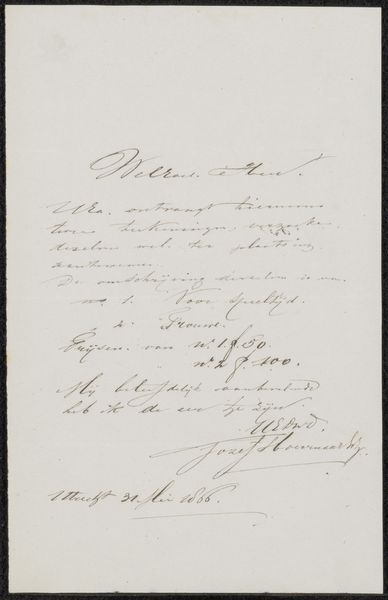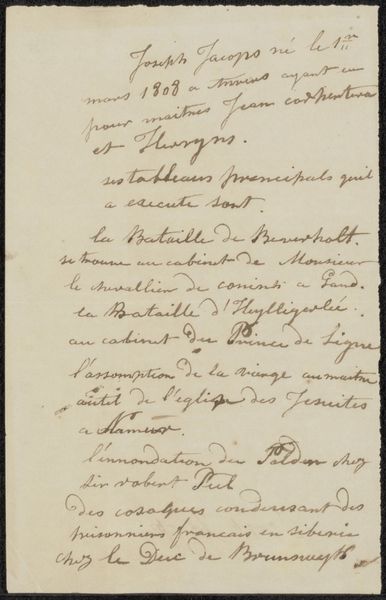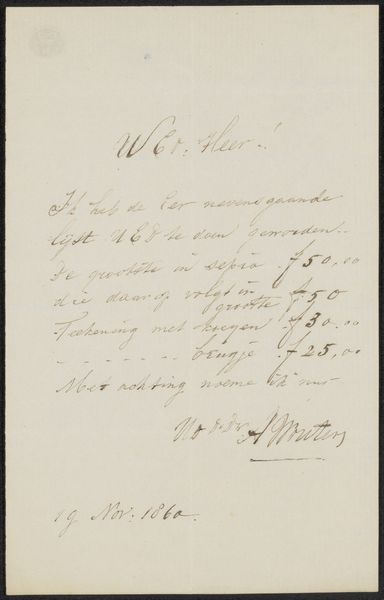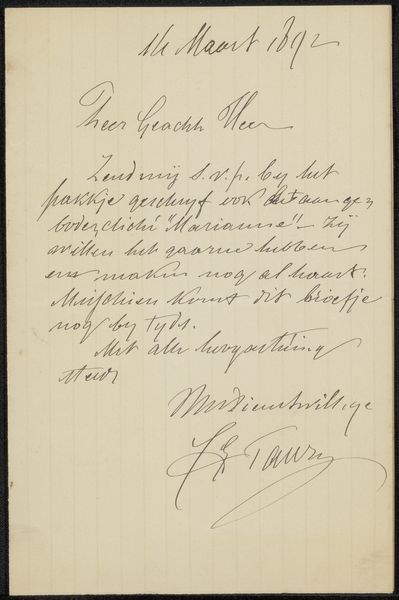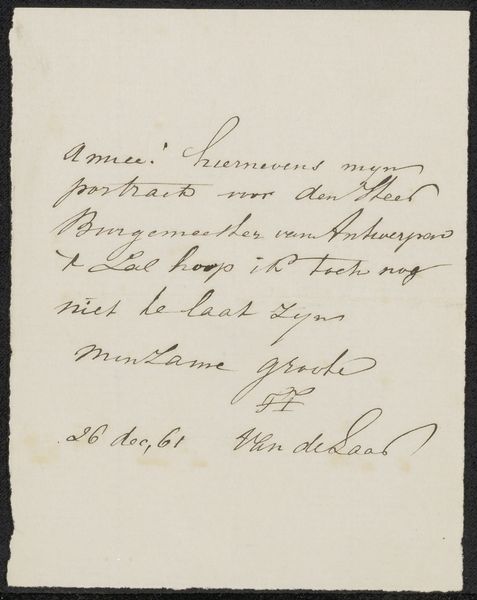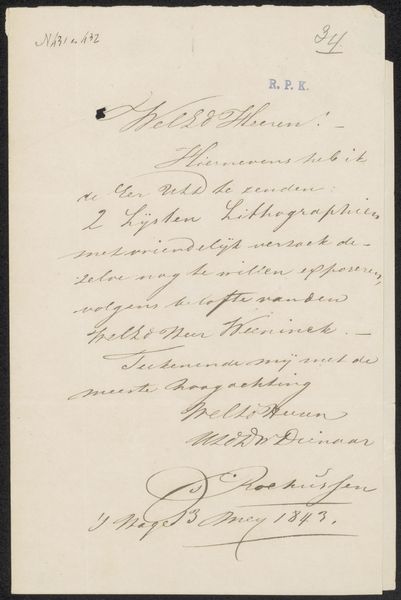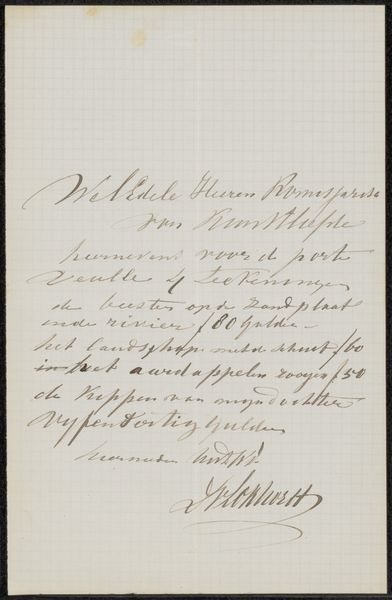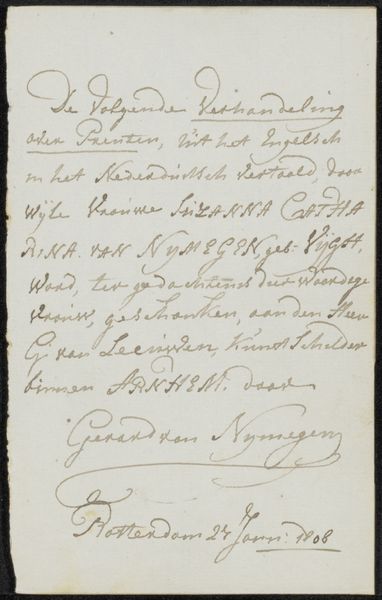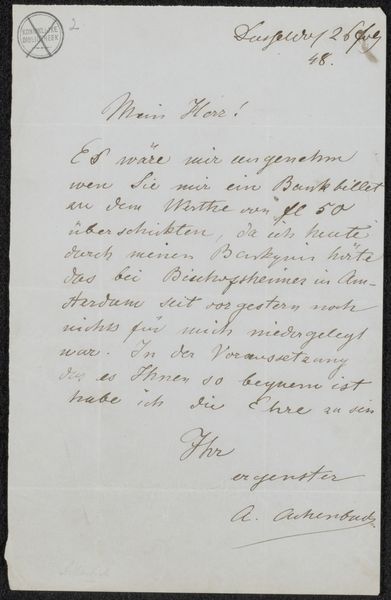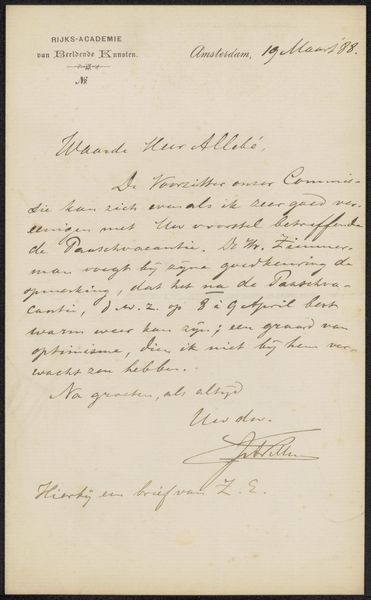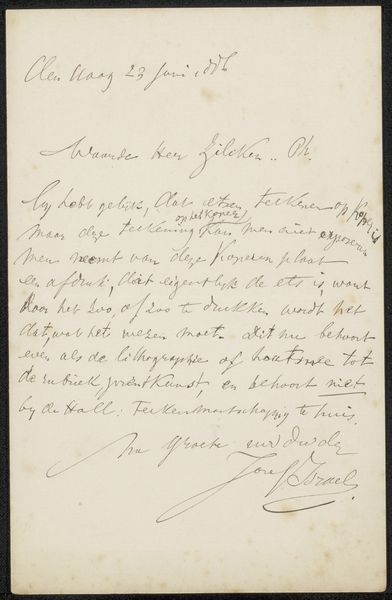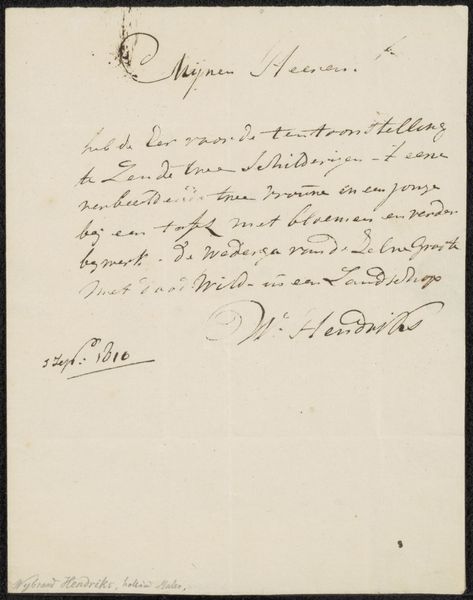
drawing, paper, ink, pen
#
drawing
#
hand drawn type
#
paper
#
ink
#
ink drawing experimentation
#
intimism
#
pen-ink sketch
#
pen work
#
sketchbook drawing
#
pen
#
calligraphy
Copyright: Rijks Museum: Open Domain
Editor: We’re looking at a drawing titled “Brief aan Johan Philip van der Kellen” by Ary Johannes Lamme, probably created between 1887 and 1889, using pen and ink on paper. It's basically a handwritten letter, and I'm struck by how the *act* of writing itself becomes the artwork, but it feels almost too ephemeral because it is difficult to read. What can you tell me about its context? Curator: It's a fascinating document. Considering its public role, let's examine this "ephemeral" feel you mentioned. What impact does the skill or, perhaps, the lack of a clear handwriting have on the viewers when they confront this “letter” today as a work exhibited in a museum, far removed from its recipient? Editor: I guess, when you put it like that, it does make the modern viewer reconsider how easy communication is today, and how much value was placed on penmanship. It creates a sort of a distance from our own habits. Curator: Precisely. Lamme seems aware of how he himself and this Johan Philip van der Kellen will be regarded. Note how it highlights the relationship between artistic skill and institutional power. The director of the Rijksmuseum's print cabinet holds considerable cultural authority. So what does Lamme want? Why did he produce it and why did he send it? Editor: The letter is offering something, a “rare piece of Matthieu van den Bergh,” for the Rijksmuseum's print collection! So, he is trying to curry favor or sell a piece of art. Curator: Exactly! The artwork isn't just the drawing itself, but also a part of the network surrounding the Rijksmuseum’s formation of collections, so what happens when someone offers art *to* the museum versus creates art *in* the museum? Editor: That's an important distinction I hadn’t thought of. It frames this piece as a social exchange, part of a negotiation. It feels much less isolated, it is something alive within society and part of a community of artists. I'll remember this next time I see a letter hung on the wall.
Comments
No comments
Be the first to comment and join the conversation on the ultimate creative platform.
